-
 Bitcoin
Bitcoin $114400
0.68% -
 Ethereum
Ethereum $3550
2.48% -
 XRP
XRP $3.001
4.99% -
 Tether USDt
Tether USDt $0.9999
0.01% -
 BNB
BNB $757.6
1.46% -
 Solana
Solana $162.9
1.07% -
 USDC
USDC $0.9998
0.00% -
 TRON
TRON $0.3294
0.91% -
 Dogecoin
Dogecoin $0.2015
2.46% -
 Cardano
Cardano $0.7379
2.01% -
 Stellar
Stellar $0.4141
8.83% -
 Hyperliquid
Hyperliquid $37.83
-1.91% -
 Sui
Sui $3.454
0.76% -
 Chainlink
Chainlink $16.62
3.53% -
 Bitcoin Cash
Bitcoin Cash $554.6
2.84% -
 Hedera
Hedera $0.2486
3.91% -
 Ethena USDe
Ethena USDe $1.001
0.00% -
 Avalanche
Avalanche $21.95
3.34% -
 Toncoin
Toncoin $3.563
-2.85% -
 Litecoin
Litecoin $112.7
2.65% -
 UNUS SED LEO
UNUS SED LEO $8.977
0.13% -
 Shiba Inu
Shiba Inu $0.00001232
1.85% -
 Uniswap
Uniswap $9.319
2.93% -
 Polkadot
Polkadot $3.632
1.38% -
 Monero
Monero $307.2
2.36% -
 Dai
Dai $0.9997
-0.03% -
 Bitget Token
Bitget Token $4.340
0.91% -
 Pepe
Pepe $0.00001048
1.07% -
 Cronos
Cronos $0.1348
3.26% -
 Aave
Aave $261.5
1.93%
How does NFT Interoperability enable cross-platform NFT usage?
NFT interoperability, using protocols like ERC-721 and bridges, allows NFTs to move between blockchains, increasing accessibility and utility, despite challenges like scalability and security.
Mar 02, 2025 at 12:36 pm
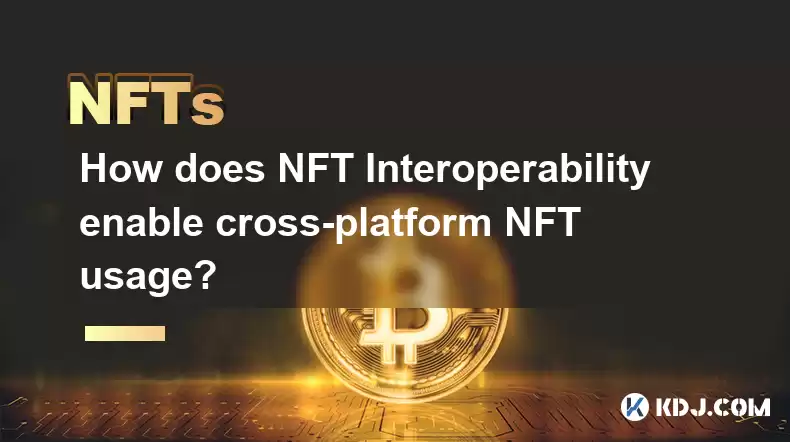
Key Points:
- NFT interoperability breaks down silos between different blockchains and marketplaces.
- Cross-chain protocols and standards like ERC-721 and ERC-1155 are crucial for enabling interoperability.
- Wrapped NFTs and bridges facilitate the movement of NFTs across different platforms.
- Challenges remain, including scalability issues, security risks, and regulatory uncertainties.
- The future of NFT interoperability lies in the development of more robust and user-friendly solutions.
How Does NFT Interoperability Enable Cross-Platform NFT Usage?
The world of Non-Fungible Tokens (NFTs) is currently fragmented. NFTs exist on various blockchains (Ethereum, Solana, Polygon, etc.), each with its own ecosystem and marketplace. This lack of interoperability limits the potential of NFTs by restricting their use to a single platform. NFT interoperability aims to solve this problem, allowing NFTs to seamlessly transition between different platforms and blockchains. This unlocks new opportunities for creators, collectors, and developers.
One of the key mechanisms enabling this is the development of cross-chain protocols. These protocols act as bridges, allowing NFTs to be transferred between different blockchains while maintaining their unique identity and metadata. This is often achieved through the process of "wrapping" an NFT. This involves creating a token representing the original NFT on a new blockchain, while the original remains secured on its original chain.
Standards like ERC-721 and ERC-1155 (Ethereum Request for Comments) play a vital role. ERC-721 defines the standard for unique, non-fungible tokens, while ERC-1155 allows for both fungible and non-fungible tokens within a single contract, increasing efficiency. These standards provide a common language for different platforms to understand and interact with NFTs, facilitating interoperability.
However, achieving seamless cross-platform NFT usage isn't without its challenges. Scalability remains a major hurdle. Transferring NFTs across chains can be slow and expensive, especially during periods of high network congestion. Security is another critical concern. Cross-chain bridges are potential targets for hackers, and any vulnerability could lead to significant losses. Regulatory uncertainty also adds complexity, as the legal framework surrounding cross-chain NFT transfers is still evolving.
Methods for Achieving NFT Interoperability:
Several approaches are being employed to achieve greater NFT interoperability:
- Wrapped NFTs: This involves creating a representation of an NFT on a different blockchain. The original NFT remains on its original blockchain, acting as collateral.
- Cross-Chain Bridges: These are protocols that allow the transfer of assets, including NFTs, between different blockchains. They often involve locking the original NFT on one chain and minting a corresponding token on another.
- NFT Aggregators: These platforms aggregate NFTs from multiple marketplaces, allowing users to browse and potentially trade NFTs across different platforms without needing to switch between them.
- Interoperability Protocols: These are protocols designed specifically to facilitate the seamless transfer and interaction of NFTs across various blockchains and platforms. They often leverage standards like ERC-721 and ERC-1155.
Specific Examples of Interoperability Solutions:
Several projects are actively working on improving NFT interoperability. These include projects focusing on creating more efficient cross-chain bridges and developing universal NFT standards. Some projects utilize sidechains or layer-2 scaling solutions to reduce transaction fees and improve speed. Others are focused on creating more user-friendly interfaces that simplify the process of transferring NFTs across different platforms.
Challenges and Future Directions:
While significant progress is being made, significant hurdles remain. These include the need for more efficient and secure cross-chain bridges, the development of more robust and widely adopted standards, and addressing scalability limitations. The legal and regulatory landscape surrounding cross-chain NFT transfers also needs further clarification.
The future of NFT interoperability hinges on overcoming these challenges. A more interconnected NFT ecosystem will unlock greater utility for NFTs, fostering broader adoption and innovation within the cryptocurrency space. Improved user experience is also paramount for mainstream adoption. Simplified processes and intuitive interfaces will be key to making cross-chain NFT transfers accessible to a wider audience.
Frequently Asked Questions:
Q: What are the benefits of NFT interoperability?
A: NFT interoperability unlocks greater liquidity, expands the potential audience for NFTs, allows for more complex and interesting applications, and facilitates the creation of truly decentralized NFT ecosystems.
Q: How secure is transferring NFTs across different blockchains?
A: Security is a major concern. The security of cross-chain transfers depends heavily on the security of the specific bridge or protocol used. It's crucial to choose reputable and well-audited solutions.
Q: What are the costs associated with transferring NFTs across chains?
A: Costs vary significantly depending on the specific blockchain, the bridge used, and network congestion. Gas fees (transaction fees) can be substantial, especially on networks like Ethereum.
Q: Will all NFTs be interoperable in the future?
A: While the goal is broader interoperability, complete interoperability for all NFTs across all platforms might not be fully realized in the short term. Technical and practical limitations, as well as the need for standardization, remain.
Q: What role do standards like ERC-721 and ERC-1155 play in NFT interoperability?
A: These standards provide a common framework for representing and interacting with NFTs, enabling different platforms and blockchains to understand and communicate with each other. They are fundamental to the development of interoperable NFT solutions.
Disclaimer:info@kdj.com
The information provided is not trading advice. kdj.com does not assume any responsibility for any investments made based on the information provided in this article. Cryptocurrencies are highly volatile and it is highly recommended that you invest with caution after thorough research!
If you believe that the content used on this website infringes your copyright, please contact us immediately (info@kdj.com) and we will delete it promptly.
- Cryptocurrency, Altcoins, and Profit Potential: Navigating the Wild West
- 2025-08-04 14:50:11
- Blue Gold & Crypto: Investing Disruption in Precious Metals
- 2025-08-04 14:30:11
- Japan, Metaplanet, and Bitcoin Acquisition: A New Era of Corporate Treasury?
- 2025-08-04 14:30:11
- Coinbase's Buy Rating & Bitcoin's Bold Future: A Canaccord Genuity Perspective
- 2025-08-04 14:50:11
- Coinbase's Buy Rating Maintained by Rosenblatt Securities: A Deep Dive
- 2025-08-04 14:55:11
- Cryptos, Strategic Choices, High Returns: Navigating the Meme Coin Mania
- 2025-08-04 14:55:11
Related knowledge
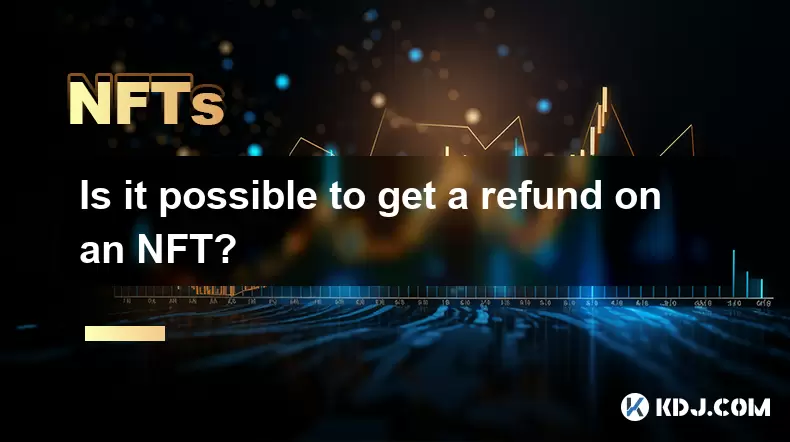
Is it possible to get a refund on an NFT?
Jul 21,2025 at 08:35pm
Understanding NFT Transactions and RefundsWhen you purchase an NFT (Non-Fungible Token), the transaction is typically recorded on a blockchain, making...
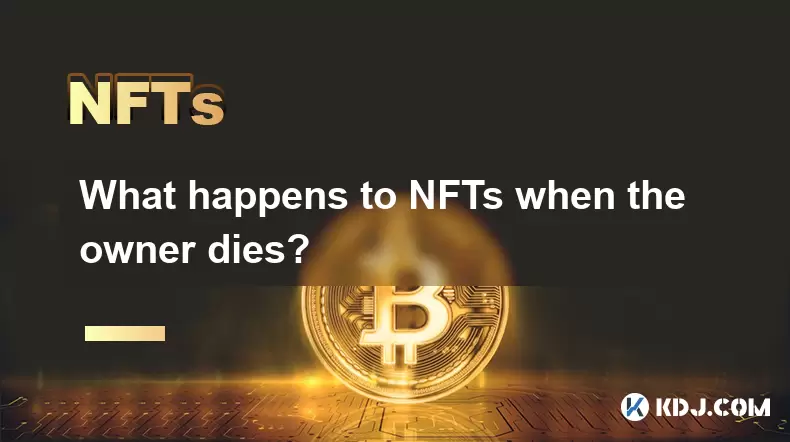
What happens to NFTs when the owner dies?
Jul 22,2025 at 02:43pm
Legal Ownership and Digital AssetsWhen an individual owns NFTs, the question of what happens to these assets upon their death is a pressing one. NFTs ...
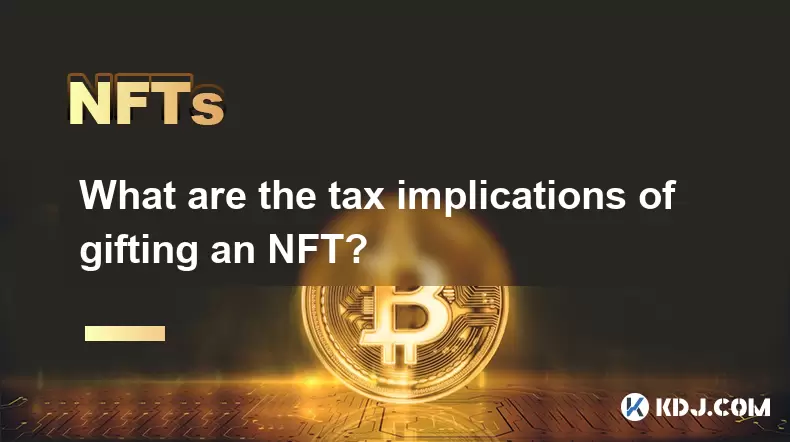
What are the tax implications of gifting an NFT?
Jul 19,2025 at 04:21am
Understanding the Basics of NFT GiftingGifting a Non-Fungible Token (NFT) involves transferring ownership from one individual to another without recei...
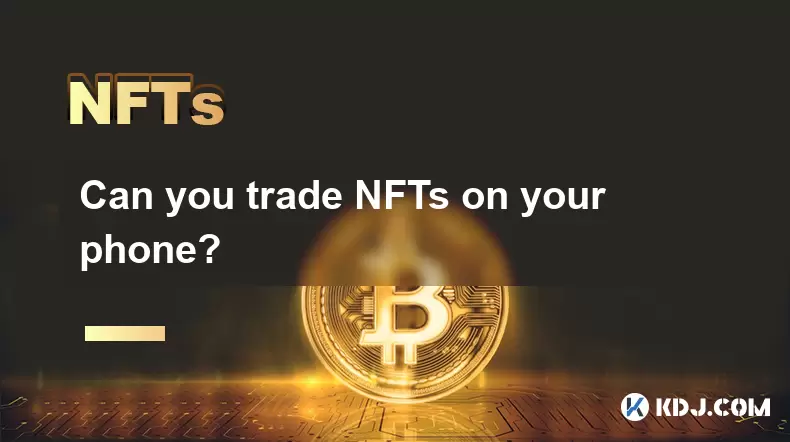
Can you trade NFTs on your phone?
Jul 18,2025 at 04:29am
Trading NFTs on Mobile DevicesYes, you can trade NFTs on your phone, and the process has become increasingly streamlined thanks to a variety of mobile...
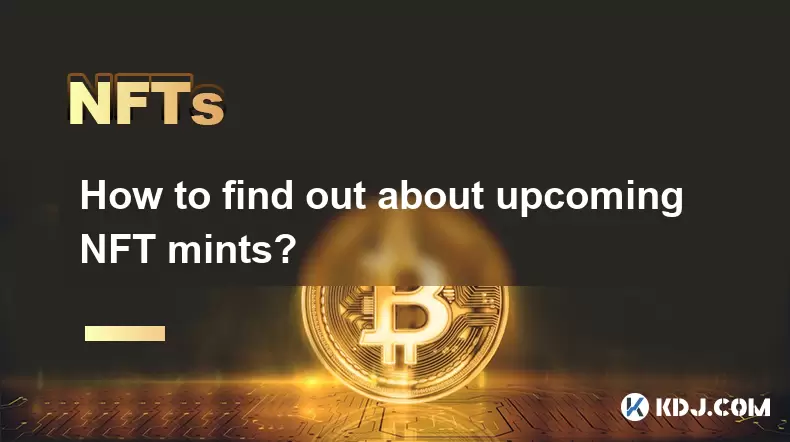
How to find out about upcoming NFT mints?
Jul 18,2025 at 11:50am
Exploring NFT Minting OpportunitiesUnderstanding the landscape of upcoming NFT mints is crucial for collectors, investors, and creators who wish to st...
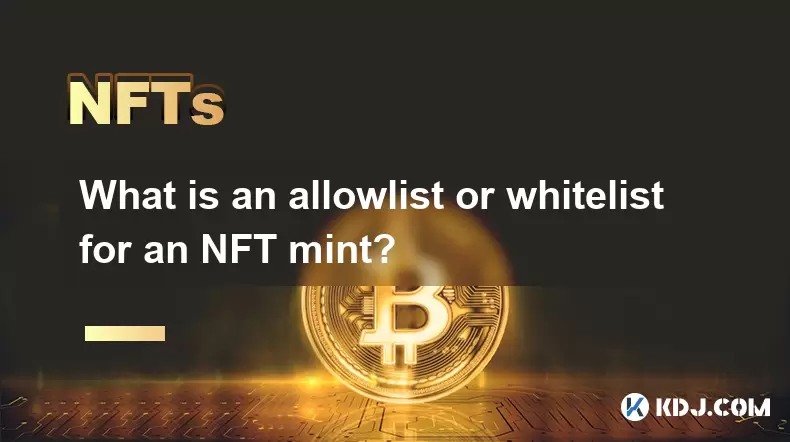
What is an allowlist or whitelist for an NFT mint?
Jul 20,2025 at 07:14pm
Understanding the Concept of an Allowlist for NFT MintingAn allowlist, also commonly referred to as a whitelist, is a mechanism used in the NFT mintin...

Is it possible to get a refund on an NFT?
Jul 21,2025 at 08:35pm
Understanding NFT Transactions and RefundsWhen you purchase an NFT (Non-Fungible Token), the transaction is typically recorded on a blockchain, making...

What happens to NFTs when the owner dies?
Jul 22,2025 at 02:43pm
Legal Ownership and Digital AssetsWhen an individual owns NFTs, the question of what happens to these assets upon their death is a pressing one. NFTs ...

What are the tax implications of gifting an NFT?
Jul 19,2025 at 04:21am
Understanding the Basics of NFT GiftingGifting a Non-Fungible Token (NFT) involves transferring ownership from one individual to another without recei...

Can you trade NFTs on your phone?
Jul 18,2025 at 04:29am
Trading NFTs on Mobile DevicesYes, you can trade NFTs on your phone, and the process has become increasingly streamlined thanks to a variety of mobile...

How to find out about upcoming NFT mints?
Jul 18,2025 at 11:50am
Exploring NFT Minting OpportunitiesUnderstanding the landscape of upcoming NFT mints is crucial for collectors, investors, and creators who wish to st...

What is an allowlist or whitelist for an NFT mint?
Jul 20,2025 at 07:14pm
Understanding the Concept of an Allowlist for NFT MintingAn allowlist, also commonly referred to as a whitelist, is a mechanism used in the NFT mintin...
See all articles

























































































